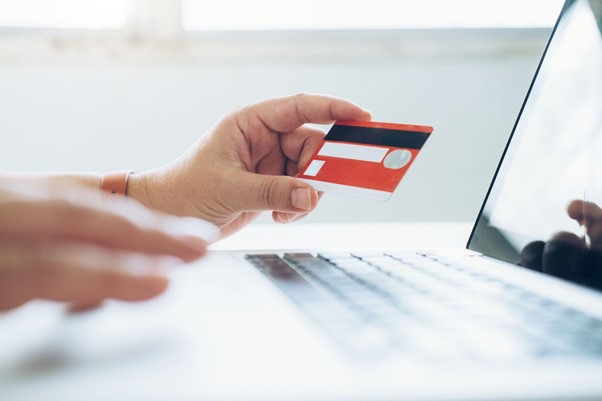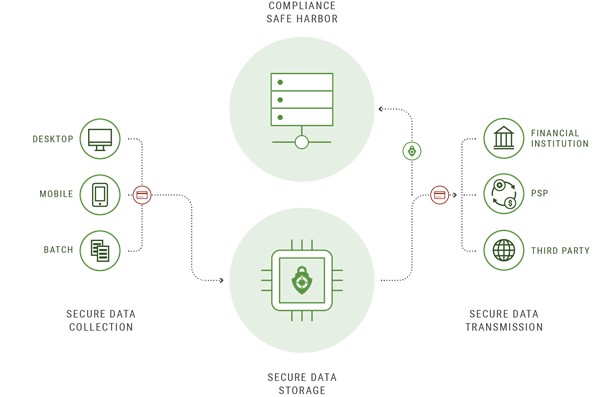Image source: Freepik
This blog was written by an independent guest blogger.
As eCommerce grows, there are more issues concerning payments and security. Customers still don’t enjoy a smooth user experience, can’t access fraud-free transactions, and there are still many declined transactions.
Online shopping still lacks a seamless experience due to the risks of storing and handling sensitive account data.
The payment system uses basic details like CVV2, 3-digit security codes, expiration dates, and primary account numbers. If these details are compromised, a lot of things can go wrong. The industry is adopting a technology called “tokenization” to deal with these issues.
Today, we will discuss this technology and help you understand how it can help.
What is tokenization?
Tokenization might sound like something complex, but the basic principle behind it is simple. It’s a process of replacing sensitive pieces of data with tokens. These tokens are random data strings that don’t hold any meaning or value to third parties.
These tokens are unique identifiers that can still hold a portions of the essential sensitive data, but they protect its security. The original data is linked to the new tokens but without giving any information that lets people reveal the data, trace it, or decipher it.
Here is a video overview of tokenization.
The data piece is stored outside the internal system used by the business. Tokens are irreversible, so if they’re exposed, they cannot be returned to their original form.
Since the data is moved elsewhere, it’s almost impossible for someone to compromise this data.
How tokenization works
Tokenization has a wide range of applications. In eCommerce, payment processing is one of the most popular areas of tokenization and companies use tokens to replace account or card numbers, most commonly the primary account number (PAN) associated with a credit card.
The PAN is replaced with a random placeholder token, and the original sensitive data is stored externally. Once the original data needs to be used to complete transaction, it can be exchanged for the token and then transmitted to payment gateways, processors, and other endpoints using various network systems.
Example of tokenization
TokenEx is a typical tokenization platform used for eCommerce payments. The platform first intercepts the sensitive data from whichever channel it is being collected–mobile, desktop, PIN pad, etc. This data is tokenized and stored securely, and then the token is returned to the client for internal use. In the end, the sensitive data is detokenized and sent to payment-processing providers for executing and verifying transactions.
In the image below you can see how data travels on the TokenEx platform.
- First, you have the channels through which the data is coming (“Secure Data Collection”).
- In the bottom-middle section, you have our platform, where data is tokenized and stored (“Secure Data Storage”) before being returned to a client environment in the top-middle section (“Compliance Safe Harbor”) for safe, compliant internal use.
- And then finally, on the right, you have the data being sent to a third party for processing (“Secure Data Transmission”), likely a payment service provider to authorize a digital transaction.
This combination of security and flexibility enables customers to positively impact revenue by improving payment acceptance rates, reducing latency, and minimizing their PCI footprint.
Image source: TokenEx
Types of tokenization
Tokenization is becoming popular in many different industries and not just eCommerce. Payments are just one of the uses of tokenization, and there are many more applications out there. Not all tokenization processes are the same, as they have different setups depending on the application.
Tokenization outside of the blockchain
Tokenization outside of the blockchain means that digital assets are traded outside of the blockchain and have nothing to do with NFTs or smart contracts. There are a variety of tokens and tokenization types outside the blockchain.
Vaultless tokenization
Vaultless tokenization is typically used in payment processing. Vaultless tokenization uses secure cryptographic devices with specific algorithms created on conversion standards that allow the safe transfer of sensitive data into non-sensitive assets. Vaultless tokens don’t require a tokenization vault database for storage.
Vault tokenization
Vault tokenization is used for traditional payment processing for maintaining secure databases. This secure database is called vault database tokenization, and its role is to store both non-sensitive and sensitive data. Users within the network decrypt tokenized information using both data tables.
NLP tokenization types
The natural language processing domain includes tokenization as one of the most basic functions. In this context, tokenization involves dividing a text into smaller pieces called tokens, allowing machines to understand natural text better. The three categories of NLP tokenization are:
- Subword tokenization
- Character tokenization
- Word tokenization
Blockchain tokenization types
Blockchain tokenization divides asset ownership into multiple tokens. Tokenization on the blockchain is similar to NFTs as they behave as “shares.” However, tokenization also uses fungible tokens, and they have a value directly tied to an asset.
Blockchain tokenization allows decentralized app development. This concept is also known as platform tokenization, where the blockchain network is used as the foundation that provides transactional support and security.
NFT tokenization
One of the most popular tokenizations today is blockchain NFTs. Non-fungible tokens are digital data representing unique assets.
These assets don’t have a predetermined value (that is where the name non-fungible comes from) and can be used as proof of ownership, letting people trade various items or authenticate transactions. NFTs are used for digital art, games, real estate, etc.
Governance tokenization
This kind of tokenization is directed toward voting systems on the blockchain. Governance tokenization allows a better decision-making process with decentralized protocols as all stakeholders can vote, debate, and collaborate fairly on-chain.
Utility tokenization
Utility tokens are created using a certain protocol allowing access to various services within that protocol. There is no direct investment token creation with utility tokens, and they provide good platform activity for improving the system's economy.
Where tokenization and eCommerce meet
Ecommerce payments have been growing for a long time, even before the global pandemic. We’re seeing a massive shift to online shopping with an exponential growth in sales. Even though the shift towards the digital world is definitive, this trend has introduced new challenges concerning security.
There’s a growing number of hackers and fraudsters looking to steal personal data. According to Risk Based Security research, in 2019 alone there were over 15 million data breaches in eCommerce. Tokenization is quickly being introduced as a way to combat fraud and convert account numbers into digital assets to prevent their theft and abuse.
Payment service providers that specialize in fraud detection can help verify transactions and devices, making it far more difficult for hackers to abuse someone’s information. Credit card and account information tokenization boosts security and protects data from external influences and internal issues.
Benefits of tokenization in eCommerce
Ecommerce companies can use tokenization to improve privacy and security by safeguarding payment information. Data breaches, cyber-attacks, and fraud can seriously affect the success of a business. Here’s how tokenization helps with all these threats.
- No need for extensive data control because tokens aren’t sensitive
Ecommerce businesses need to implement extensive data control protocols for handling sensitive data and ensuring there are no liabilities. It can be a really tiresome and expensive process. Tokenization removes this issue because none of the confidential data is stored internally.
- No exposure if someone gets access to tokens
Data breaches are often fatal to businesses. They can lead to destroyed reputations, damaged business operations, loss of customers, and even legal issues. There’s no exposure of sensitive data when hackers access a database with tokenized payment records.
All payment data and personal information are safe since they aren’t stored within your systems. It’s true that this doesn’t prevent hacks, but it prevents the consequences of such events.
- Frictionless transactions and convenience
Modern customers love simplicity. Having saved payment information and the option to press one button to make a purchase is crucial for business success. However, providing this kind of experience carries risk as companies must save payment information so that customers can reuse it.
Having multiple cards linked to an account with saved information creates liability. Tokenization can enable seamless payment options for end customers without requiring routing numbers or credit cards to be stored internally.
- Companies can more easily comply with the PCI DSS
Companies that accept payment information and store it need to be compliant with various regulations, specifically the Payment Card Industry Data Security Standard. However, meeting these security requirements takes a lot of time and money. Payment tokenization service providers usually already have the required compliance certifications, so you’re outsourcing the majority of this responsibility to someone else.
Conclusion
We hope this post has helped you understand the basics of tokenization and how you can use it in eCommerce. The global tokenization market is estimated to grow at 21.5% CAGR, indicating that tokenization is here to stay.
Keep in mind that we’re only scratching the surface here.

